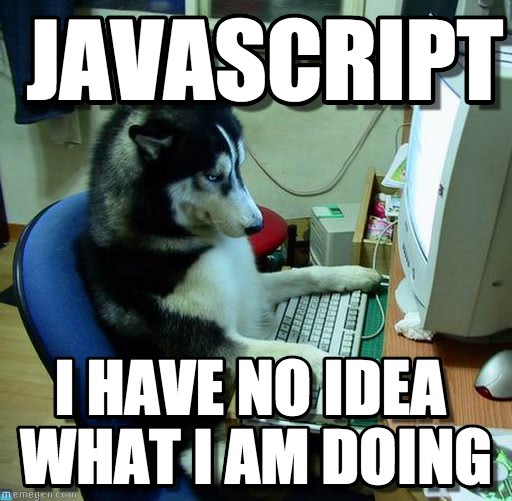JavaScript Design Patterns
and how we use them at De Persgroep
In English?
Who am I?

HI!
I'm @joggink
Freelance javascript developer
Back in the days...
snippets!

But then!
Frameworks!

jQuery
+
plugins
=
instant win!
And then you become part of a webteam

Every member has it's own way of solving problems
PATTERNS
Projects get bigger and more complex
PATTERNS
Agile workflow means an agile codebase?
PATTERNS
What is a pattern?
A reusable solution that can be applied to commonly occurring problems in software design
- in our case -
in writing JavaScript web applications.

In short
They're proven solutions
They're easy to reuse
Module pattern
ANYTHING can be defined as a reusable module!
the basics? IIFE
Immediately invoked function expressions
(function(){
// code to be invoked immediately
}());
That's great but there's no privacy...
Let's return an object instead of a function
var basket = (function(){
// private array
var _basketItems = [];
// private functions
function _addItemToBasket(item){
_basketItems.push(item);
}
function _getBasketItems(){
return _basketItems;
}
// exposed to public
return {
add: _addItemToBasket,
get: _getBasketItems
}
}());
basket.add('butter');
basket.add('milk');
// will return an array
console.log(basket.get());
// undefined
console.log(basket.basketItems);
console.log(basket.getBasketItems());
Advantages?
It's clean
Privacy!
It's clean
Privacy!
Disadvantages?
Privacy :(
Bug fixing
PITA for unit testing
Privacy :(
Bug fixing
PITA for unit testing
Mediater pattern
Encapsulates how disparate modules interact with each other by acting as an intermediary

Imagine each module as an airplane
Our mediator is the control tower
Centralised communication
A module can broadcast / listen to notifications
Notifications can be handled by any number of modules at once
Easy to add / remove feateres to loosely coupled systems like this
Arbiterjs
Pub / sub
var basket = (function(){
// private array
var _basketItems = [];
// private functions
function _addItemToBasket(item){
_basketItems.push(item);
Arbiter.publish('storage/add', item);
}
function _getBasketItems(){
return _basketItems;
}
// exposed to public
return {
add: _addItemToBasket,
get: _getBasketItems
}
}());
var storage = (function(){
Arbiter.subscribe('storage/add', _addToLocalStorage);
// private functions
function _addToLocalStorage(item){
// logic to add this item to our localStorage
}
function _removeFromLocalStorage(item){
// remove stuff
}
// NOTHING is exposed to the public!
}());
Arbiter.publish('storage/add', [params]);
A message may be in any format, but may not contain [ ,*]. A structure like a/b/c is recommended by convention, to allow messages to be categorized.
Arbiter.subscribe('storage/add', _functionToBeExecuted);
Listen to a specific message 'storage/add' and execute the appropriate function
Facade pattern
Convencient, high level interfaces to larger bodies of code that hide underlying complexity
simple public functionality but hides complex private functionality
So imagine making a communication layer between your application and the frameworks you use...
Making your application framework independent
FRAMEWORK INDEPENDENT!

Fuck jQuery

So we ditch jQuery and use micro frameworks
And we'll use a facade pattern to communicate with these patterns

Demo
Thanks @bengie!
